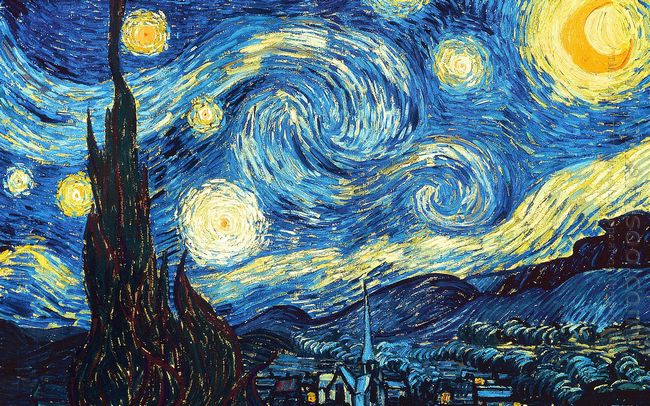Starry Night is painted by Vincent Van Gogh in the year 1889 when he was in the mental hospital. As a representative work of Van Gogh, the post-Impressionist painter, his painting has strong brush strokes.
In this painting, the main color is blue that means unhappy and sullen, while the thick brush strokes on behalf of sorrow and worry. What Starry Night portrayed is the scene that can be seen when looked out of the window, the cypress painted like black flames straight on the clouds, expressed a feeling of unease. The lines of the sky seem like Whirlpool Galaxy with stars, while the moon appeared in the form of eclipse. In the whole picture, the bottom of the village was drawing by flat and stubby line that shows a kind of halcyon, which made a strong contrast with the stubby and crooked lines in the upper part. All the highly exaggerated deformation and strong visual contrast reflects the artist’s restless emotions and psychedelic imagery world.
Starry Night is a landscape painting, under the spire of the church set a village, and the stars flowed as vortex. What Van Gogh painted was his imagination, because that’s exactly what he saw. His brush stroke was bold and unrestrained, which seems to be irrational, but it doesn’t matter if it is serious or not, maybe at that time, he just closed his eyes, tasted his painfulness and followed his inclinations of squandering intuitively.
